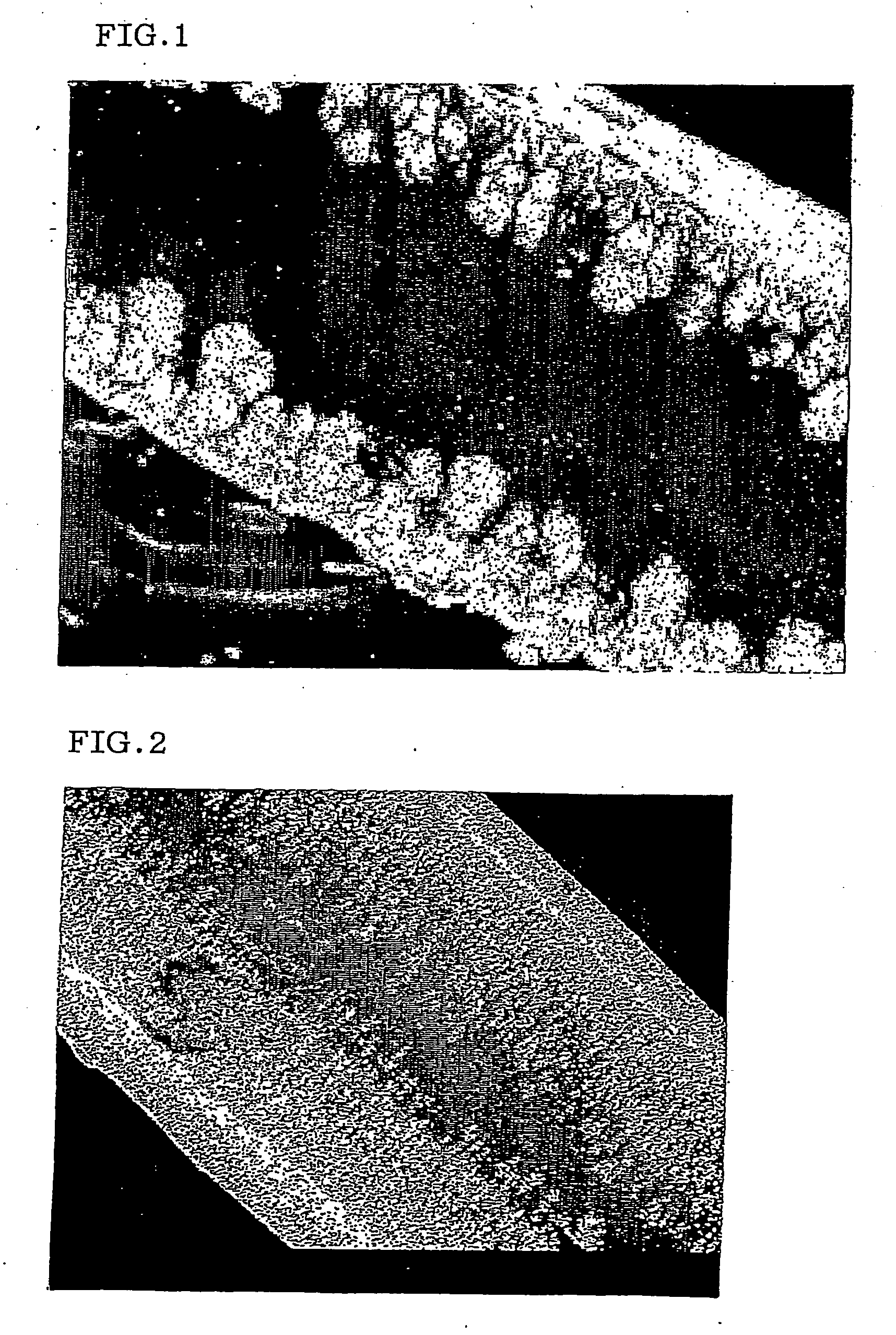Electricity storage device and process for producing the same
a technology of storage device and capacitor, which is applied in the direction of cell components, sustainable manufacturing/processing, and final product manufacturing, etc., can solve the problems of insufficient capacitance, reduced degree of freedom in designing the shape of capacitor, and difficult material handling and usability, etc., to facilitate the production of an electricity storage device
- Summary
- Abstract
- Description
- Claims
- Application Information
AI Technical Summary
Benefits of technology
Problems solved by technology
Method used
Image
Examples
example
[0077] In the following, an example and a comparative example of the present invention are shown, but the present invention is not restricted to those examples.
example of
Production of Electrode-Electrolyte Structure
[0078] A membrane polymer electrolyte (fluoroplastic ion exchange resin: perfluorocarbonic acid resin, brand name “Flemion”, manufactured by Asahi Glass Co., Ltd., ion exchange capacity of 1.8 meq / g) having a film thickness of 160 μm at the time of drying was into methanol as a swelling solvent at 20° C. for 30 minutes or longer. The thickness of the swollen membrane polymer electrolyte was measured and a ratio (swelling ratio (%)) at which the film thickness has increased after the swelling with respect to the film thickness in a dried state was calculated, and the membrane polymer electrolyte was immersed into the swelling solvent such that the swelling ratio was 50%. Subsequently, the following cycle of steps (1) to (3) was performed six times on the swollen polymer electrolyte, to obtain the polymer electrolyte with a pair of polarizable electrodes as the metal electrodes formed therein. (1) Absorbing step: the swollen polymer electro...
example 1
[0079] The electrode-electrolyte structure obtained in the above-mentioned production example was immersed into 0.5 mol / L of a bis(trifluoromethyl)sulfonyl imide lithium (Li(CF3SO2)2N) aqueous solution for 12 hours, and the electrode-electrolyte structure was subjected to vacuum drying for 120 minutes. The dried electrode-electrolyte structure was immersed into 1.0 mol / L of a propylene carbonate solution of bis(trifluoromethyl)sulfonyl imide lithium (Li(CF3SO2)2N) for 12 hours. Voltage was applied to each of the pair of polarizable electrodes of the electrode-electrolyte structures containing the propylene carbonate solution for 12 hours such that the negative electrode voltage was −5.0V, and thereby the electricity storage device of Example 1 was obtained. In the obtained electricity storage device, the negative electrode was discolored black, and an alloy of lithium and gold was provided at the electrode-polymer electrolyte interface. Further, ion species contained in the electric...
PUM
| Property | Measurement | Unit |
|---|---|---|
| thickness | aaaaa | aaaaa |
| area | aaaaa | aaaaa |
| capacitance | aaaaa | aaaaa |
Abstract
Description
Claims
Application Information
 Login to View More
Login to View More - R&D
- Intellectual Property
- Life Sciences
- Materials
- Tech Scout
- Unparalleled Data Quality
- Higher Quality Content
- 60% Fewer Hallucinations
Browse by: Latest US Patents, China's latest patents, Technical Efficacy Thesaurus, Application Domain, Technology Topic, Popular Technical Reports.
© 2025 PatSnap. All rights reserved.Legal|Privacy policy|Modern Slavery Act Transparency Statement|Sitemap|About US| Contact US: help@patsnap.com

